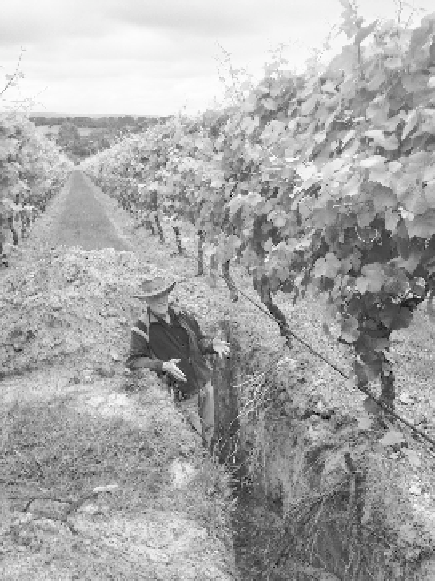Agriculture Reference
In-Depth Information
Figure 6.6
he author
explaining how soil
properties in a vineyard in
the Mornington Peninsula
region, Victoria, Australia,
could contribute to the
typicity of Pinot Noir wines
made from that site. (Photo
courtesy of Ms. Cheryl
Lee, Mornington Peninsula
Vignerons Association,
Victoria, Australia.)
need to be identified at a much higher resolution to demonstrate a true
terroir
effect.
However, we should also recognize that, collectively, single-variety wines produced
from whole regions, such as the Côte d'Or or Beaujolais in France, come to reflect,
over a long period of time, a regional distinctiveness, which wine writer David
Schildknecht (eRobertParker.com) calls a “strong”
terroir
effect.
The second approach to winemaking is more likely to be taken by large
wine companies with extensive estates, where a blended wine is made from fruit
produced on several soil types (figure 6.7). In some cases, wineries adopt both
approaches, depending on the characteristics of a particular season's vintage. For
example, Tim Smith (2007) of Chateau Tanunda in the Barossa Valley region,
South Australia, has said “we blend different Shiraz wines to achieve a 'house
style,' but wines within the blend are occasionally worthy of keeping separate to
show their individuality.” Single vineyard wines and wines deemed to reflect a
particular
terroir
are increasingly being promoted as offering the consumer a dis-
tinctive wine experience.
Irrespective of whether grapes are grown to make a
terroir
wine or a blended
varietal wine (
vin de cépage
), there are several broad issues confronting the wine
industry that relate directly or indirectly to soil management. These issues relate to
the “sustainability” of a winegrowing enterprise in the face of changing consumer

